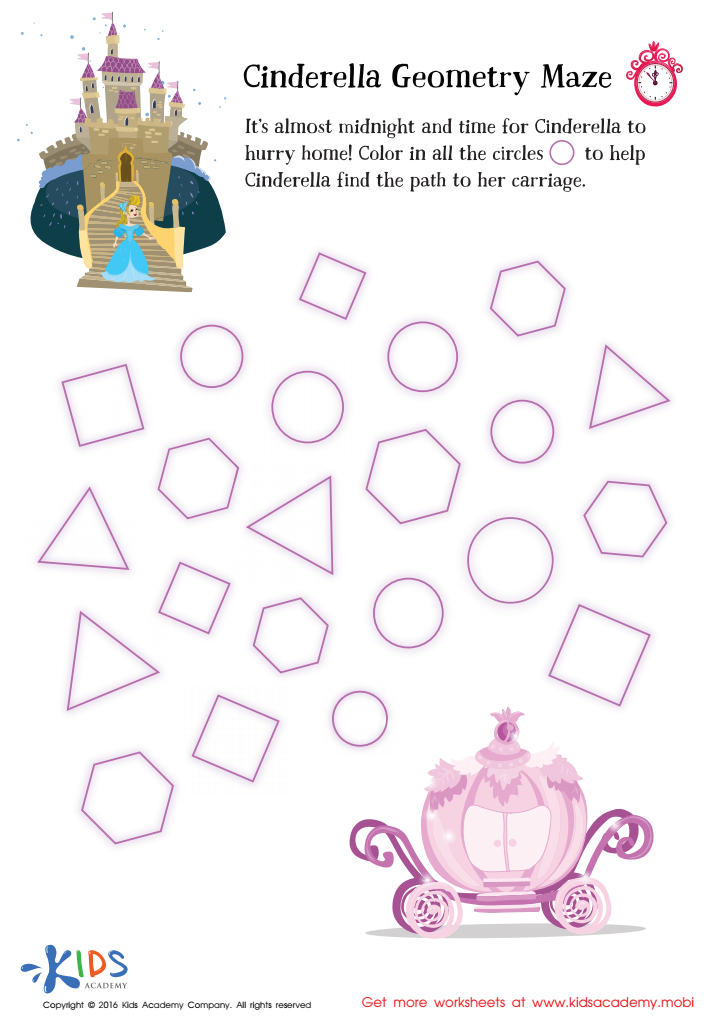Spatial Orientation Geometry Worksheets for Ages 3-8
3 filtered results
-
From - To
Explore our engaging Spatial Orientation Geometry Worksheets designed for children ages 3-8! These interactive activities help young learners develop crucial spatial awareness and geometry skills through fun and imaginative exercises. Our worksheets cover essential concepts such as shape recognition, directional understanding, and positional language, all tailored to enhance cognitive development in early childhood. With eye-catching visuals and age-appropriate challenges, children can practice navigating space, recognizing patterns, and applying math concepts in enjoyable ways. Perfect for classroom use or at-home learning, these worksheets are a fantastic resource for nurturing a solid foundation in math and spatial reasoning.


Going up or Down? Worksheet


Faces of 3D Shapes Worksheet


Cinderella Geometry Maze Worksheet
Spatial orientation geometry is crucial for children aged 3-8 as it lays the foundation for essential cognitive and motor skills. During these formative years, children are developing their understanding of spatial relationships, shapes, and sizes, which are vital in everyday life and academic learning.
Firstly, spatial orientation helps children navigate their environment. For instance, recognizing where they are in relation to objects aids in their safety and social interactions. Understanding spatial concepts like "above," "below," "inside," or "next to" promotes effective communication and enhances vocabulary.
Moreover, mastery of spatial reasoning is closely linked to success in subjects such as mathematics and science later on. Concepts like addition or subtraction, and geometry will be easier to grasp for children who have developed a strong spatial awareness. Engaging children in activities like puzzles, building blocks, or simple maps fosters these skills.
Finally, spatial orientation promotes problem-solving abilities and critical thinking. By experiencing different spatial scenarios through play and exploration, children learn to approach challenges creatively. In conclusion, prioritizing spatial orientation geometry in early childhood education is vital for holistic development, preparing children for both academic and life challenges ahead.
 Assign to My Students
Assign to My Students






























